Material Collection
Tile
Ceramic and porcelain tiles are composed of natural materials like clay, feldspar, and quartz and are generally a healthy choice. They can, however, contain toxic additives in their pigments, frits, and glazes. Historically, one major health concern has been the use of heavy metals such as lead in glazes.
Below are a few examples of tile that meet our rigorous evaluation. For further help on your own search for healthier tile, scroll down to "Spec Guidance”.
Tile
12 products
About Our Collections
The goal of our collections is to help promote transparency in the material ingredients of building products by fostering knowledge and awareness of products and materials for which life-cycle information is available, and that have environmentally, economically, and socially preferable life-cycle impacts.
Keep an eye out for the following symbols:
A Healthier Affordable Building Product
Products with the designation of "Healthier & Affordable" were specified and installed in at least one of our Case Studies of healthier affordable housing.
Available at the Donghia healthier Materials Library
The Donghia healthier Materials Library library is open to Parsons student and faculty. Learn more about access and opening hours here.
Low Embodied Carbon
“Embodied Carbon” is the total amount of carbon emitted during the process of making a material. *HML refers to a manufacturer's EPD to determine whether a product's A1-A3 carbon emissions falls within HML's threshold for Low Embodied Carbon.
New Product
This product has been added to the collection within the past six months.
Product in Development
Products with this designation identify they are currently scaling or only available in markets outside of the building industry. they could be experimental or in use in capsule collections.
Available in the EU
Products with this designation are currently available only in the European Union and identified as being an exemplary healthy option in the respective product group.
Ingredient Disclosures
There are several ways of evaluating a material’s health that we include with product information. Disclosures are reports by manufacturers about product ingredients, impacts, or other attributes.
Key Disclosures include:
Health Product Declaration (HPD)
A voluntary technical specification for reporting information on product contents and associated health information, intended to be the health-analogue to Environmental Product Declarations (EPDs).
Declare Label
Declare is a transparency platform and product database that answers three questions:
1. Where does a product come from?
2. What is it made of?
3. Where does it go at the end of its life?
Environmental Product Declaration (EPD)
A standardized format for communicating the environmental effects associated with a product’s raw materials extraction, energy use, chemical makeup, waste generation, and emissions to air, soil, and water.
Safety Data Sheet (SDS)
A reporting format that provides basic information about a material’s chemical ingredients, the potential safety hazards to installers, and recommended practices for installation.
USDA Certified Biobased Product Label
Managed by the U.S. Department of Agriculture (USDA), the goal of the BioPreferred Program is to increase the purchase and use of biobased products.
Other
| Manufacturer | Product | Ingredient Disclosures |
|---|---|---|
| Fireclay Tile | Glazed Thin Brick |
Glazed Thin BrickUsed in Healthier Affordable HousingAvailable At the Donghia Materials LibraryThe raw brick that makes up Fireclay's Glazed Thin Brick is sourced through a supplier who has been in business for over 100 years and continues to source and manufacture all brick in California, within 150 miles from the Fireclay Tile factory. The brick qualifies for LEED points and is glazed by hand on-site at the Fireclay Tile factory in Aromas, CA. The bricks provide a durable, long-lasting, and easy-to-clean surface suitable for a range of projects. CategoryMasonry, BrickManufacturerFireclay Tile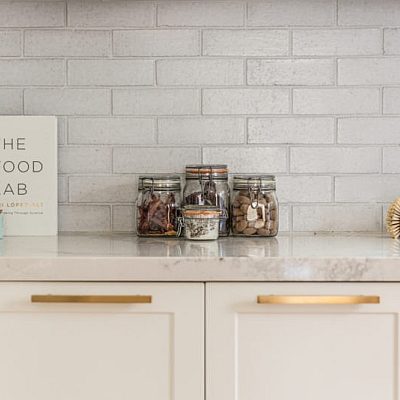
Material composition*Clay 95-100%, Frits (Unleaded) 2-5%, Manganese Dioxide 0-3%, Chromite 0-3%, Barium Carbonate 0-3% *as reported by the manufacturer AVAILABLE SIZING2.5"x8" COLORS28 colors available CERTIFICATIONS & DISCLOSURES
Health Product Declaration (HPD)
Declare Label
Environmental Product Declaration (EPD)
Safety Data Sheet (SDS)
USDA Certified Biobased Product Label
Other
Last UpdatedMay 26, 2023 |
| Fireclay Tile | Original Ceramic Tile |
Original Ceramic TileAvailable At the Donghia Materials LibraryFireclay's Recycled Clay Body is made from 50% recycled content, including post-consumer recycled porcelain/glass and pre-consumer recycled granite dust. The tiles are handcrafted in Aromas, California and are 100% VOC free. All of the glazes are also lead-free. Fireclay offsets their carbon footprint via Carbonfund.org.Fireclay is based in California making this product most suitable for projects in the western United States. CategoryTile, CeramicManufacturerFireclay Tile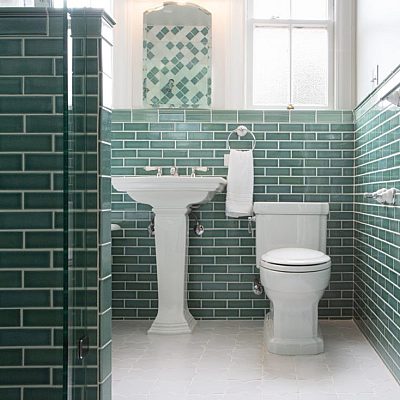
Material composition*Silica 45-55%, Aluminum Oxide 15-25%, Frits (Unleaded) 5-15% *as reported by the manufacturer AVAILABLE SIZING2"x4" up to 12"x12" tiles COLORSOver 130 colors available CERTIFICATIONS & DISCLOSURES
Health Product Declaration (HPD)
Declare Label
Environmental Product Declaration (EPD)
Safety Data Sheet (SDS)
USDA Certified Biobased Product Label
Other
Contributes to LEED credits
Last UpdatedMarch 26, 2024 |
| Daltile | Keystones |
KeystonesUsed in Healthier Affordable HousingAvailable At the Donghia Materials LibraryDaltile’s Keystones Collection is a colorbody porcelain mosaic line, suitable for indoor and outdoor use on floors, walls, as well countertops. A multitude of patterns allow for many expressive, aesthetic choices. The majority of these tiles are produced in Gettysburg, PA making this best suited for projects in the Northeastern United States. CategoryTile, PorcelainManufacturerDaltile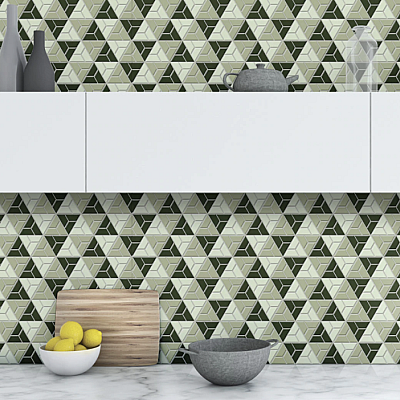
Material composition*Feldspar 40-60%, Kaolin clay 15-35%, Talc 0-6%, Nepheline Syenite 0-3%, Sand 0-2%, Zircon 0-1%, C.I. Pigment Black 27 0.5%, C.I. Pigment Blue 71 0.5%, C.I. Pigment Brown 33 0.5%, C.I. Pigment Green 26 0.5%, C.I. Pigment Red 108, C.I. Pigment Red 232 0.5%, C.I. Pigment Yellow 159 0.5%, Zinc Oxide 0.5%, Calcium Carbonate 0.2%, 1,2-Cyclohexanedicarboxylic acid, 1-butyl 2-ester 0.01-0.03% *as reported by the manufacturer AVAILABLE SIZINGvarious mosaic patterns and sizes CERTIFICATIONS & DISCLOSURES
Health Product Declaration (HPD)
Declare Label
Environmental Product Declaration (EPD)
Safety Data Sheet (SDS)
USDA Certified Biobased Product Label
Other
Last UpdatedJanuary 31, 2025 |
| Tagawa Sangyo | Limix |
LimixLimix tiles are a lime-based alternative to traditional ceramic. Not only are these tiles free of toxics that could off-gas into the indoor air, they also actively absorb VOCs and carbon, improving indoor air quality. Additionally, they regulate humidity, and their high alkalinity makes them naturally antibacterial, antiviral, and antifungal. Compared to baked ceramic tiles, Limix also consume 80% less energy during manufacturing. Limix is awaiting Cradle to Cradle re-certification. The tiles will be Cradle to Cradle Gold, with a C2C Material Health Certification at the Platinum level. CategoryTile, LimeManufacturerTagawa Sangyo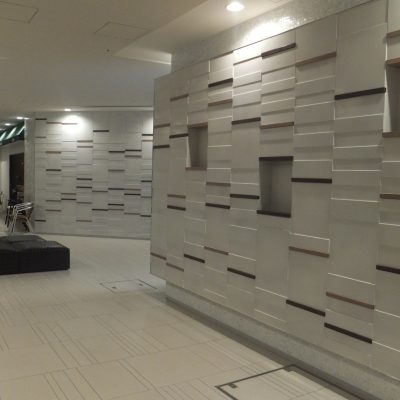
Material composition*Calcium Carbonate (Eggshells), Slaked Lime, Marble Dust *as reported by the manufacturer AVAILABLE SIZINGFloor tiles: 400mm x 400mm x 15mm, 600mm x 600mm x 18mm; Wall tiles: 400mm x 400mm x 10mm, 600mm x 600mm x 12mm COLORSAvailable in a wide range of colors CERTIFICATIONS & DISCLOSURES
Health Product Declaration (HPD)
Declare Label
Environmental Product Declaration (EPD)
Safety Data Sheet (SDS)
USDA Certified Biobased Product Label
Other
Additional DocumentsLast UpdatedJanuary 31, 2025 |
| Green Leaf Brick | Green Leaf Brick |
Green Leaf BrickAvailable At the Donghia Materials LibraryGreen Leaf Brick is a strong, sustainable, healthy building product. It is a fired masonry brick made of 100% recycled content with up to 31% post-consumer waste-streams. Green Leaf Brick is Red List Free. It comes in a range of colors and sizes, and clients have the option to customize the brick size, color, and texture. CategoryMasonry, BrickManufacturerGreen Leaf BrickMaterial composition*Aluminum Silicates 75-85%, Iron Compounds 0-5%, Calcium Compounds 0-12%, Quarz VARIES, Barium Compounds 0-3%, Iron Chromite 0-3%, Manganese Compounds 0-3%, Magnesium Compounds 0-3%, Bottom Ash 0-18% *as reported by the manufacturer AVAILABLE SIZINGAvailable in a range of sizes COLORSAvailable in a range of colors CERTIFICATIONS & DISCLOSURES
Health Product Declaration (HPD)
Declare Label
Environmental Product Declaration (EPD)
Safety Data Sheet (SDS)
USDA Certified Biobased Product Label
Other
Last UpdatedDecember 16, 2025 |
| Daltile | Panoramic Porcelain Surfaces |
Panoramic Porcelain SurfacesAvailable At the Donghia Materials LibraryDalTile's Panoramic Porcelain Surfaces are comprised of silica, quartz, mullite, and feldspar. Raw materials are extracted from quarries with environmental recovery plans according to EU Directive 92/43 / EEC. Due to their production process and material composition, these products require no additional sealants which often contain toxic materials. Their surfaces mimic the appearance of natural stone slabs and concrete and can be used for floors, walls, and countertops. CategoryTile, PorcelainManufacturerDaltile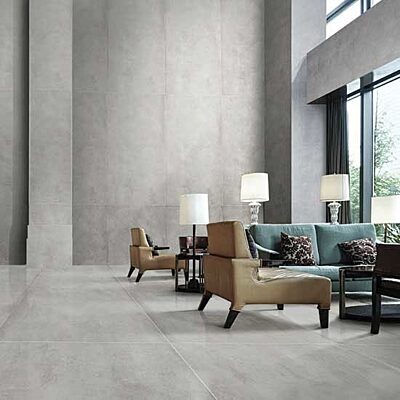
Material composition*Silica 75-85%, Quartz 10-15%, Mullite 2.5-5%, Feldspar 0-5% *as reported by the manufacturer AVAILABLE SIZINGvaries across collections COLORSvaries across collections CERTIFICATIONS & DISCLOSURES
Health Product Declaration (HPD)
Declare Label
Environmental Product Declaration (EPD)
Safety Data Sheet (SDS)
USDA Certified Biobased Product Label
Other
Last UpdatedMarch 20, 2024 |
| Daltile | Articulo |
ArticuloUsed in Healthier Affordable HousingAvailable At the Donghia Materials LibraryArticulo is a line of porcelain tiles that are designed to look like vein-cut travertine. This product is made in the U.S. and contains both post-consumer and pre-consumer recycled material. It is comprised of just 6 materials that are converted into benign, fully vitrified porcelain during the firing process. The majority of these tiles are produced in Muskogee, OK making this best suited for projects in the southeastern United States. CategoryTile, PorcelainManufacturerDaltile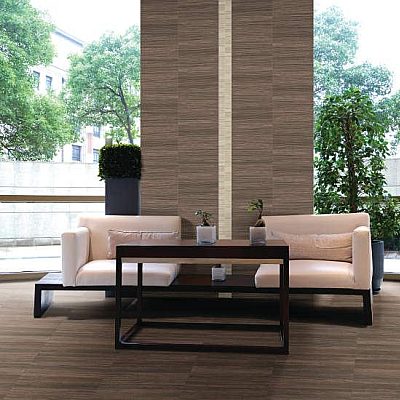
Material composition*Clay 35-55%, Feldspar 10-30%, Nepheline Syenite 0-20%, Sand 0-20%, Talc 0-2%, Chromium iron oxide 0-1%, Hematite 0.5%, C.I. Pigment Brown 24 0.3%, Zinc Oxide 0.2%, C.I. Pigment Black 25 0.1%, C.I. Pigment Blue 72 0.1%, C.I. Pigment Green 26 0.1%, C.I. Pigment Yellow 159 0.1%, Zircon, iron coral 0.1%, C.l. Pigment Red 108 0.05%, C.I. Pigment Red 233 0.05%, Silicic Acid 0.05% *as reported by the manufacturer AVAILABLE SIZING1x3 in, 6x18 in, 12x24 in, 18x36 in COLORSEditorial White AR06, Feature Beige AR07, Story Brown AR08, Column Grey AR09, Headline Grey AR10 CERTIFICATIONS & DISCLOSURES
Health Product Declaration (HPD)
Declare Label
Environmental Product Declaration (EPD)
Safety Data Sheet (SDS)
USDA Certified Biobased Product Label
Other
Additional DocumentsLast UpdatedJanuary 31, 2025 |
| bioMASON | bioMASON |
bioMASONUsed in Healthier Affordable HousingAvailable At the Donghia Materials LibrarybioMASON grows tiles using technology similar to hydroponics - units mixed with microorganism are fed an aqueous solution to harden the tiles to specification. bioMASON’s process eliminates the need for firing by replacing the curing/hardening process with biologically controlled structural cement. CategoryPourables and Aggregates, ConcreteManufacturerbioMASON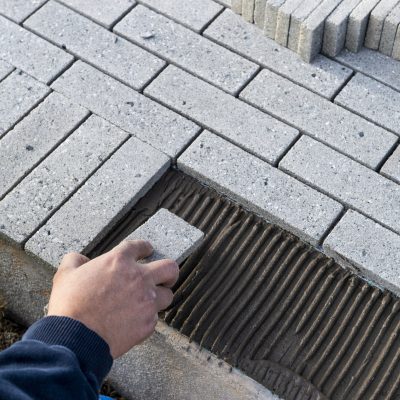
Material composition*Sand, Sporosarcina pasteurii (bacteria), Calcium Carbonate *as reported by the manufacturer CERTIFICATIONS & DISCLOSURES
Health Product Declaration (HPD)
Declare Label
Environmental Product Declaration (EPD)
Safety Data Sheet (SDS)
USDA Certified Biobased Product Label
Other
Last UpdatedDecember 16, 2025 |
| Fireclay Tile | Natural Press |
Natural PressAvailable At the Donghia Materials LibraryFireclay's Natural Press Clay Body is made in Spokane, Washington using locally sourced materials, repurposed old, discarded tiles, recycled wastewater, and glaze materials. All glazes are 100% lead-free. Using the Natural Press technique, clay is pressed into molds, dried, glazed and single fired to reduce cost and carbon emissions. CategoryTile, CeramicManufacturerFireclay Tile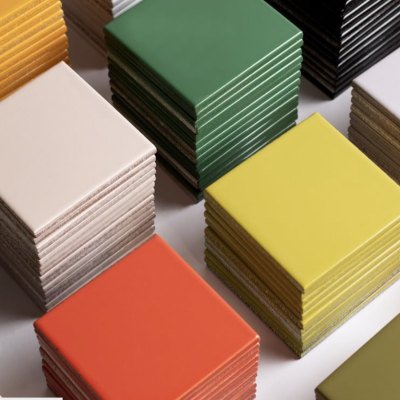
Material composition*Recycled Clay *as reported by the manufacturer CERTIFICATIONS & DISCLOSURES
Health Product Declaration (HPD)
Declare Label
Environmental Product Declaration (EPD)
Safety Data Sheet (SDS)
USDA Certified Biobased Product Label
Other
Additional DocumentsLast UpdatedMarch 11, 2025 |
| MAGNA Glaskeramik | MAGNA Glaskeramik |
MAGNA GlaskeramikMAGNA Glaskeramik is made of 100% recycled glass from glass bottles and industrial waste. The glass waste is broken into shards and sintered without additional binders or pressure. It is fully recyclable. Each glass plate is unique and can be used for countertops, vanities, shower walls, room partitions, kitchen worktops, backsplashes, tables, flooring, wall cladding and light walls. CategoryDimensional Surface, GlassManufacturerMAGNA Glaskeramik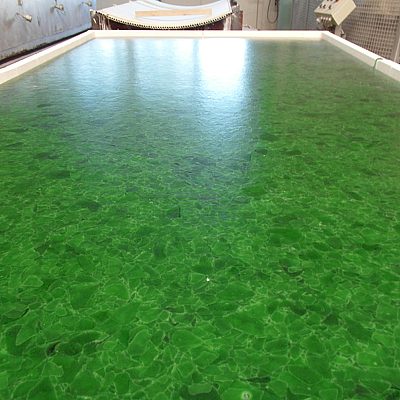
Material composition*100% recycled glass *as reported by the manufacturer CERTIFICATIONS & DISCLOSURES
Health Product Declaration (HPD)
Declare Label
Environmental Product Declaration (EPD)
Safety Data Sheet (SDS)
USDA Certified Biobased Product Label
Other
Cradle to Cradle Material Health | Gold
Last UpdatedDecember 15, 2025 |
| Pyrolave Architecture |
Pyrolave
|
PyrolaveAvailable At the Donghia Materials LibraryAvailable in the EUPyrolave tiles are enameled "lava-stone", or rock formed from cooled lava, for use in bathrooms, kitchens, restaurants, countertops, and building cladding. Pyrolave Architecture conducts an extensive two-year study of their quarries prior to extraction and a report that details: the assessment and management of direct, indirect, temporary, and permanent effects on the environment, a landscape study, an analysis of noise, dust, and vibration, hydrogeologic and hydrologic evaluations, and evidence that there is no risk of pollution from hydrocarbon, organic, or mineral waste. The quarry has a regulated annual extraction limit and they complete site restoration processes ensuring site regeneration. In comparison to granite or marble, this natural stone requires less energy for extraction. CategoryTile, StoneManufacturerPyrolave Architecture
Material composition*99% lava stone, 1% enamel glaze *as reported by the manufacturer CERTIFICATIONS & DISCLOSURES
Health Product Declaration (HPD)
Declare Label
Environmental Product Declaration (EPD)
Safety Data Sheet (SDS)
USDA Certified Biobased Product Label
Other
Last UpdatedDecember 15, 2025 |
| IGNORANCE IS BLISS |
Metal Waste is Bliss
|
Metal Waste is BlissAvailable At the Donghia Materials LibraryProduct in DevelopmentAvailable in the EUIgnorance is Bliss ceramic tiles repurpose industrial waste into high-quality glazes, reducing reliance on mined resources and excessive processing. Sourced from drinking water supply, soil remediation, biofuel production, and stone manufacturing, these industries generate thousands of tonnes of residue annually. Up to 48% of the glaze consists of reclaimed waste depending on the color. Developed through extensive research, the current palette offers many colors. While conventional ceramic glazes can rely on toxic lead and barium to enhance flow and color vibrancy, Ignorance is Bliss formulations exclude these harmful substances, reducing exposure risks for workers and minimizing environmental impact. CategoryTile, CeramicManufacturerIGNORANCE IS BLISS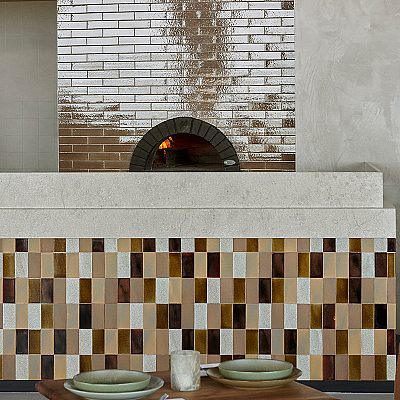
Material composition*Clays, Silica, Borax Frit, Calcium Borate Frit, Kaolin, Ferro Frit 3134, Gerstley Borate, Soda Feldspar, Talc, High Alkaline Frit, Strontium Carbonate, Ball Clay, Lithium Carbonate, Kali Feldspar, Bentonite, Wollastonite, Zinc Oxide, Tin Oxide, Calcium Carbonate Waste, Industrial Metal Waste, Biofuel Waste (Wood Ash) *as reported by the manufacturer CERTIFICATIONS & DISCLOSURES
Health Product Declaration (HPD)
Declare Label
Environmental Product Declaration (EPD)
Safety Data Sheet (SDS)
USDA Certified Biobased Product Label
Other
Last UpdatedDecember 15, 2025 |
The products in this collection have all been evaluated holistically for their contents and performance. To be considered, a product must disclose at least 75% of its ingredients by weight. It should avoid the biggest health concerns (such as those indicated in the HML Spec guidance for this product category) or be third-party certified. For ceramic tile, this means selecting tiles made in the U.S. that are free of antimicrobial coatings and post-consumer recycled content.
All products are evaluated for embodied carbon {kg of CO₂ eq /square meter) if (LCA) and (EPD) documentation is available. Those under 5 kg of CO₂ equivalent per square meter earn the HML Standard for Low Embodied Carbon (LEC) and are clearly marked.
Spec Guidance
Inquire with manufacturers for transparency and LCA information as much as possible. Materials new to the market may not yet have certifications and disclosures and often are made proprietarily.
Be attentive to tile made outside of the United States. Imported tiles may not be subject to the same lead content regulations.
Prefer products with full ingredient disclosures, including frits, glazes, and pigments.
Prefer tiles with an abrasion rating of 4 or higher to minimize the potential release of toxins from the coating or glaze.
Avoid antimicrobial coatings as they can contain harmful biocides. They are not shown to improve population health. (HBN)
Avoid tiles with non-specific post-consumer recycled content. Some manufacturers recycle old cathode ray tubes (CRTs) from TVs and computers, which contain high levels of lead, into their tiles. The EPA currently allows the production of recycled CRT tiles in the US, saying: “when glazes are properly formulated and fired at a high temperature, the lead is sealed or ‘vitrified’ and its potential to leach from the glaze is limited.” (EPA)
Updated March 13, 2018
Related Tools and Guides
More Collections
Join Our Academic Network
Get Access to our carefully researched and curated academic resources, including model syllabi and webinars. An email from an academic institution or a .edu email address is required. If your academic institution does not use .edu email addresses but you would like to join the network, please contact healthymaterialslab@newschool.edu.
Already have an account? Log in